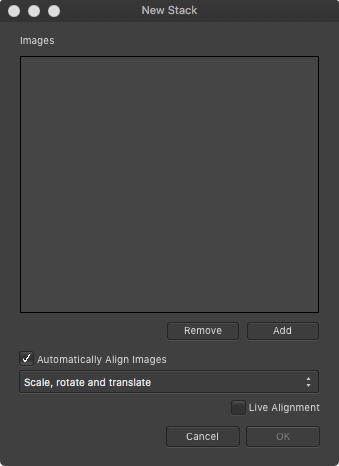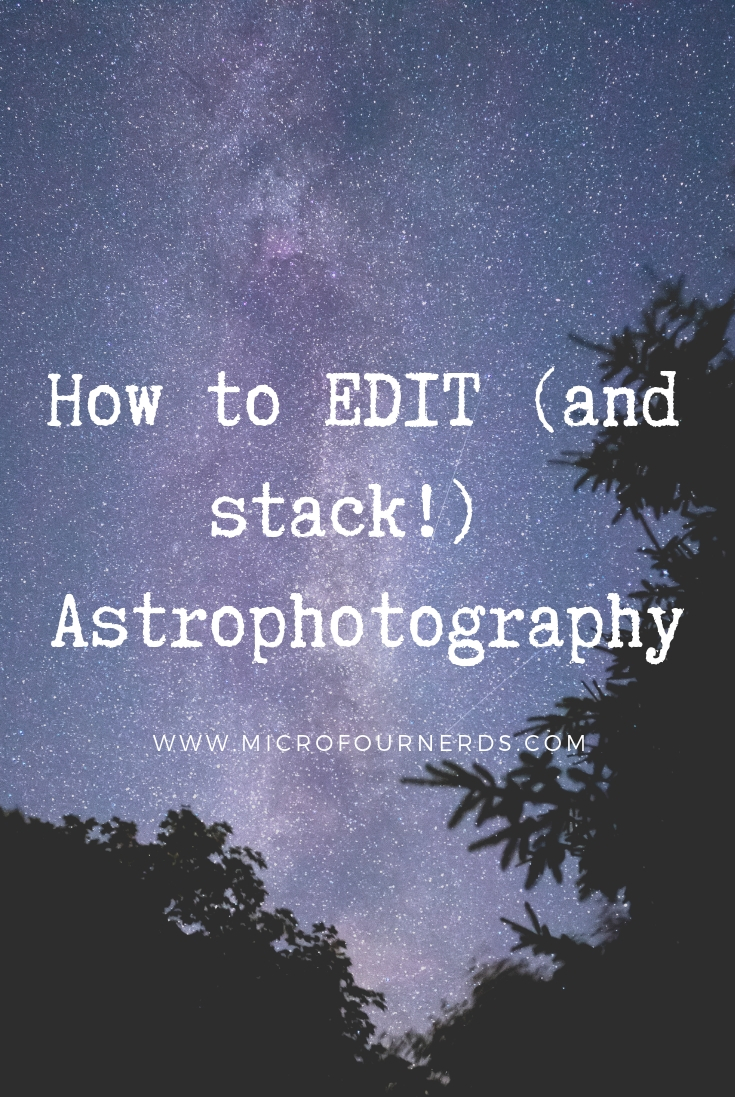
- #Best astro stacking software for mac full#
- #Best astro stacking software for mac iso#
- #Best astro stacking software for mac windows#
On some still, ultra-clear nights at high altitude, far from city lights, the seeing gets amazingly good, but for any other circumstances, it is less than ideal. One of the critical factors in the clarity of a astrophotography image is the "seeing." The more turbulent the atmosphere at the time you are imaging. Those were good replies, but I would like to add one thing.

Take a look at the Astrophotography Talk Forum on DPReview for more information on astrophotography. This process also works well on the Moon - even better since it has a much larger angular size, 1/2 degree. Even details that are not apparent on individual frames will become visible. The result is that the noise of each image, being random, tends to average out to be zero, while image details (which are always in the same location - not random) tend to be reinforced. The program then registers the images using alignment points and then stacks the images. In effect you just keep the best images with the best resolution and discard the blurry ones. The photographer then chooses a quality limit, beyond which any lower quality images are excluded from further use. It then, in a sense, reorders the frames in sequence from best quality (sharpest image) to worst quality (the most blurred by seeing). What is so powerful about programs like Registax is that they evaluate every frame and give it a quality assessment. If you have a sufficient number of images there will be some in which the instantaneous seeing is better - that one image is sharper the most of the other frames. One method is to capture a large number of short exposure images, either video (AVI) or multiple still images (JPEGs). So how do you get around the effects of atmospheric seeing. For a planet, being much smaller in angular size than the Moon, the effect is worse. Even on a night of better seeing, there will be some distortions present. The image would be swimming around, blurring and distorting. On a night of poor seeing (most apparent by the stars doing a lot of twinkling), if you were to look at say a magnified view of the Moon, it would be like looking through the surface of disturbed water. With that kind of magnification, the effects of distortions caused by air of differing temperatures becomes a problem. The largest planet, Jupiter is around 45 arc seconds - 0.013 degree! So to get a decent number of pixels in the image you must use very long focal lengths - 10,0000 mm is not too long. First off planets have an incredibly small angular size (measured in arc seconds). So why stack planetary images? Bear with me.
#Best astro stacking software for mac windows#
So you'll have to use something like Bootcamp or Parallels to run a virtual Windows session. Unfortunately both of these programs are Windows only. Registax is free, and I believe Avistack is also. For that type of imaging, one of the best programs is Registax, but others use Avistack. I will just answer your question in the area I'm most knowledgeable - lunar/planetary imaging. There are a number of different kinds of astrophotography that benefit from stacking.
#Best astro stacking software for mac iso#
It's possible to pick up additional details this way (I guess it's analogous to using a lower ISO than available on the camera). If you take a photograph of same static image multiple times and average the individual images by stacking, then you get a stronger signal to noise ratio since the different noise between images gets averaged to a lower level while the signal is preserved.
In this way, you can get the long exposure needed in astrophotography but reduce or eliminate star trails.Īnother benefit of stacking is to realize improved resolution through multi-sampling.
#Best astro stacking software for mac full#
The benefit of having individual exposures is that if there is subject movement, then the motion blur is much reduced on each individual exposure vs the full long exposure, and you can try to align the individual images before combining them.
.jpg)
If you simply combine the exposures (a simple example of stacking), in principle you should get the long exposure back. Think of taking a long exposure and breaking it into shorter individual exposures. Someone else probably can explain much better than I can, but seeing as nobody has responded yet I'll chip in with my understanding. If I may ask a rudimentary question: what is the purpose/goal of stacking astrophotography photos? I understand merging exposures for hdr, but what is the deal with stars, the moon, whichever? I would like to find out as my girlfriend loves everything astronomy.


 0 kommentar(er)
0 kommentar(er)
